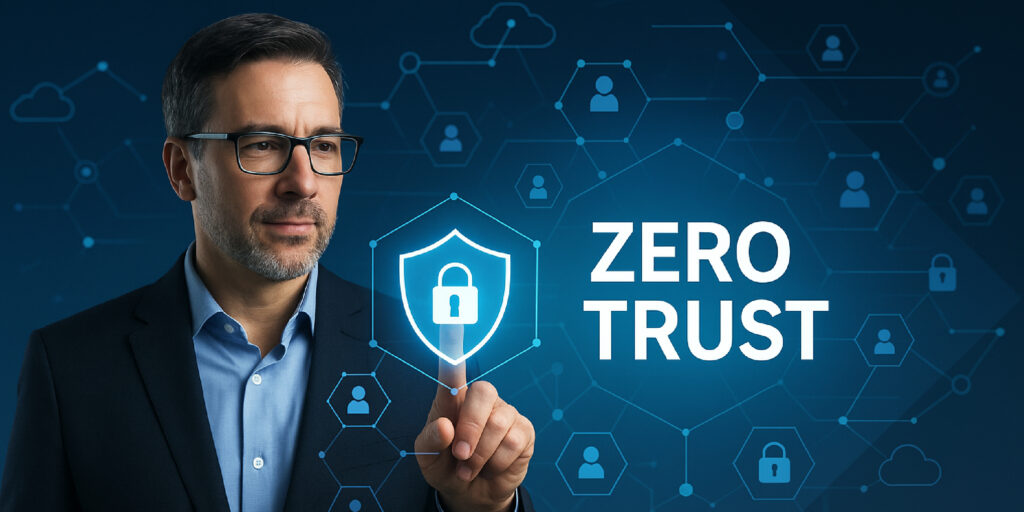What Is Zero Trust Security—And Why Every Business Leader Needs to Understand It
You’ve probably heard the term “Zero Trust” tossed around in security conversations. But what is it, really—and why does Zero Trust security matter for your business? Here’s the short version: Zero Trust is a modern security model that assumes no person or device can be trusted automatically—even if they’re inside your network or already logged in. Every access request—whether it’s someone checking email or a software system connecting to another—must prove it’s safe every time. Why? Because in today’s world: Zero Trust makes sure your business isn’t relying on luck. It relies on proof. Old-school IT security was like a castle with a moat. Once you got in, you had free reign. Today? There’s no moat: If your system automatically trusts someone once they’re “in,” that’s a massive risk. Imagine your business is a secure office building. In the old model, once someone walked through the front door, they could go anywhere. With Zero Trust: It’s not about being paranoid—it’s about being proactive and smart. Here are the three big ideas behind Zero Trust, in plain English: Just because someone’s on your network doesn’t mean they should get access to everything. Every request is checked. Access is based on who you are, what device you’re using, where you’re connecting from, and whether your device is secure. Everyone and everything only gets access to exactly what they need—nothing more. If something gets hacked, it can’t spread across the entire system. Let’s walk through a couple of real-world scenarios: Your employee logs in from a home laptop. Before they can access company files: A hacker gets into your network using a stolen password. But with Zero Trust: The damage is contained and controlled, not catastrophic. Nope. It’s actually the opposite. Done right, Zero Trust: Yes, it takes work to implement—but the payoff in reduced risk and peace of mind is huge. Here’s what’s at stake if you don’t act: Zero Trust is about protecting your business, not just ticking off IT checkboxes. Even if you’re not a tech expert, you’re responsible for making sure your business is secure and resilient. Zero Trust gives you a framework to do that. Most leaders don’t realize this, but: At Doceo, we secure these “hidden endpoints” by: That’s Zero Trust in action—applied to every corner of your business. And here’s the truth: You can’t afford not to invest in this. Zero Trust isn’t about fear. It’s about control, visibility, and smart decision-making. Whether you’re managing a remote workforce, migrating to the cloud, or just trying to stay ahead of threats—Zero Trust is your foundation for real security. You don’t need to figure this out alone. Doceo helps organizations of all sizes implement practical, real-world Zero Trust strategies across: Talk to a Doceo expert today or call 888-757-6626 for a simple, no-pressure conversation about where to start. Doceo: Proven Technology. Proven People.

Why Business Leaders Can’t Ignore Zero Trust Security
Traditional Security Is Outdated—Here’s Why
Zero Trust: A Better Way to Think About Security
Key Principles of Zero Trust (No Jargon, We Promise)
1. Never Trust Automatically
2. Verify Every Time
3. Limit What People (and Systems) Can Do
What Does Zero Trust Look Like in Action?
✔️ Example 1: Protecting a Remote Team
✔️ Example 2: Preventing Hackers from Moving Around
✔️ Isn’t This Just More IT Headaches?
Why CEOs, CFOs, and CTOs Should Care
What About Devices Like Printers and Copiers?
The Business Case: What’s the ROI?
Ready to Make Your Organization More Secure?
Let Doceo Help You Get Started




